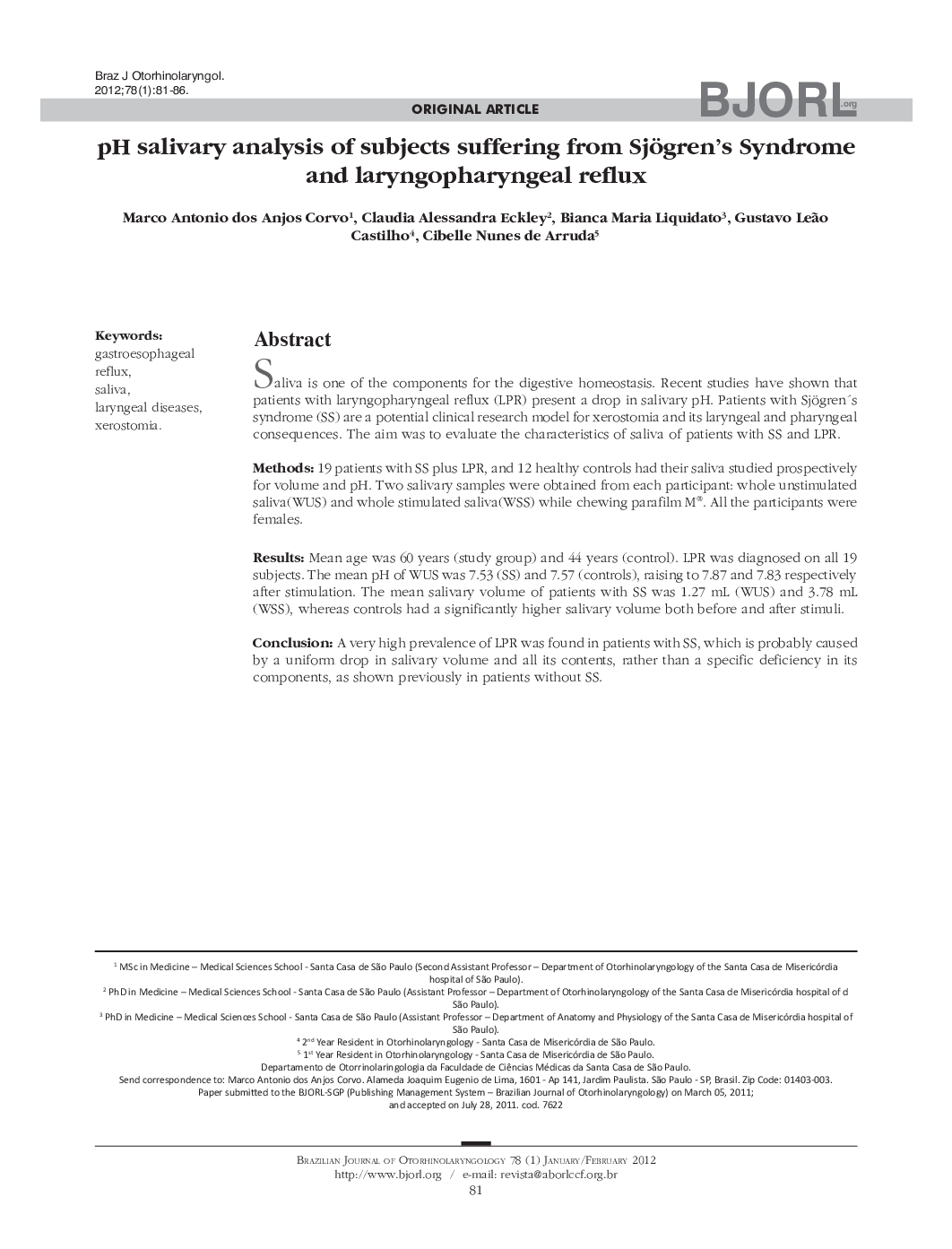| Article ID | Journal | Published Year | Pages | File Type |
|---|---|---|---|---|
| 4106417 | Brazilian Journal of Otorhinolaryngology | 2012 | 6 Pages |
Saliva is one of the components for the digestive homeostasis. Recent studies have shown that patients with laryngopharyngeal reflux (LPR) present a drop in salivary pH. Patients with Sjögren´s syndrome (SS) are a potential clinical research model for xerostomia and its laryngeal and pharyngeal consequences. The aim was to evaluate the characteristics of saliva of patients with SS and LPR.Methods19 patients with SS plus LPR, and 12 healthy controls had their saliva studied prospectively for volume and pH. Two salivary samples were obtained from each participant: whole unstimulated saliva(WUS) and whole stimulated saliva(WSS) while chewing parafilm M®. All the participants were females.ResultsMean age was 60 years (study group) and 44 years (control). LPR was diagnosed on all 19 subjects. The mean pH of WUS was 7.53 (SS) and 7.57 (controls), raising to 7.87 and 7.83 respectively after stimulation. The mean salivary volume of patients with SS was 1.27 mL (WUS) and 3.78 mL (WSS), whereas controls had a significantly higher salivary volume both before and after stimuli.ConclusionA very high prevalence of LPR was found in patients with SS, which is probably caused by a uniform drop in salivary volume and all its contents, rather than a specific deficiency in its components, as shown previously in patients without SS.
